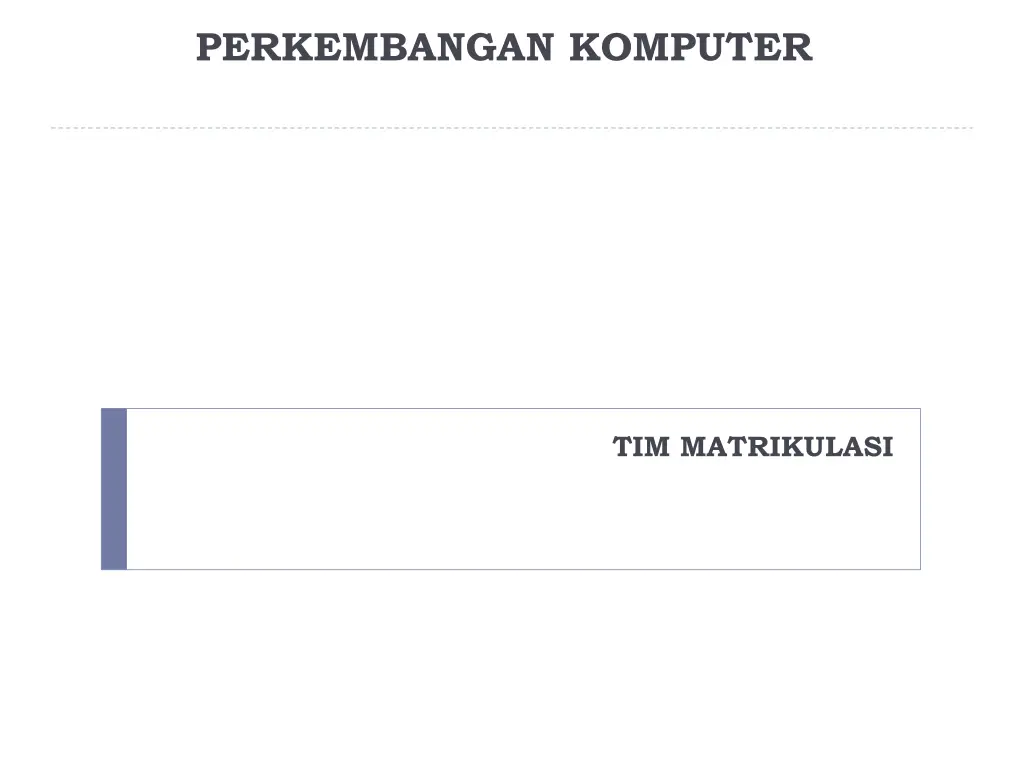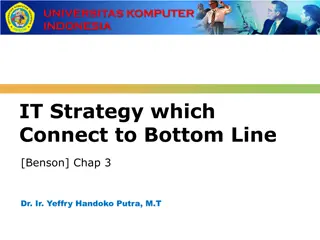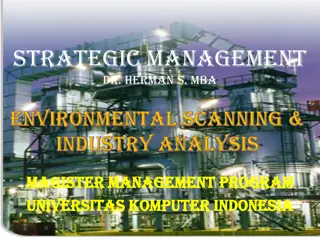
Computer Evolution and Information Technology Overview
Explore the evolution of computers and information technology, from the basics of data and information to advanced topics like system concepts and software engineering. Dive into the history, development, and application trends of computers, all presented by DanangWahyu Utomo.
Download Presentation

Please find below an Image/Link to download the presentation.
The content on the website is provided AS IS for your information and personal use only. It may not be sold, licensed, or shared on other websites without obtaining consent from the author. If you encounter any issues during the download, it is possible that the publisher has removed the file from their server.
You are allowed to download the files provided on this website for personal or commercial use, subject to the condition that they are used lawfully. All files are the property of their respective owners.
The content on the website is provided AS IS for your information and personal use only. It may not be sold, licensed, or shared on other websites without obtaining consent from the author.
E N D
Presentation Transcript
PERKEMBANGAN KOMPUTER TIM MATRIKULASI DanangWahyu Utomo
RENCANA KEGIATAN PERKULIAHAN SEMESTER W Pokok Bahasan W Pokok Bahasan 1 Pengenalan Teknologi Informasi 9 Komputasi Pemrograman 10 2 Konsep Sistem Komputer & Pengenalan Perangkat Keras 11 Rekayasa Perangkat Lunak 3 12 Komunikasi data & Jaringan Komputer 4 Data Storage 13 5 14 Etika teknologi informasi dan dampak sosial Perangkat Lunak 6 7 Data dan Informasi 15 Teknologi Topik Terkini / Advance 8 Ujian Tengah Semester 16 Ujian Akhir Semester DanangWahyu Utomo
Reference Bruce K William, Stacey C. Sawyer Using Information Technology : A Practical Introduction to Computers & Communications 9th Edition (2010) J. Glenn Brookshear Computer Science : An Overview 11th Edition (2011) DanangWahyu Utomo
Review Last Week Data ? Information ? Information technology ? DanangWahyu Utomo
Review Last Week Data Data consist of the raw facts and figures that are processes into information Information Information Technology DanangWahyu Utomo
Review Last Week Data Data consist of the raw facts and figures that are processes into information Information Data that has been summarized or manipulated for use in decision making Information Technology DanangWahyu Utomo
Review Last Week Data Data consist of the raw facts and figures that are processes into information Information Data that has been summarized or manipulated for use in decision making Information Technology Any technology that helps to produce, manipulate, store, communicate, and/or dissminate information DanangWahyu Utomo
Outline History & Computer Evolution Architecture of Von Neumann Trend of Computer Application DanangWahyu Utomo
History & Computer Evolution First Second Generation Third Generation Generation Fourth Generation Fifth Generation DanangWahyu Utomo
First Generation DanangWahyu Utomo
First Generation ENIAC (Electronic Numerical Integrator And Computer) - John Mauchly and John Eckert, proposed to build a general purpose computer using Vacuum Tubes - Started 1943 and finished 1946 - Used until 1955 DanangWahyu Utomo
First Generation ENIAC detail - Decimal - 20 accumulator of digits - Program manually by switches - 18,000 vacuum tubes - 30 tons - 15,000 square feet - 140 kW power consumption - 5000 additions per second DanangWahyu Utomo
First Generation Von Neumann / Alan Turing - Princeton Institute for Advance Studies (IAS) - Store program concept - Main memory - Arithmetic Logic Unit - Control Unit - Input / Output equipment - Completed in 1952 DanangWahyu Utomo
Second Generation Transistor - Replaced vacuum tubes - Smaller - Cheaper - Less heat dissipation - Solid state device - Invented 1947 at Bell Labs DanangWahyu Utomo
Second Generation 1947 Eckert Mauchly Computer Corporation UNIVAC (Universal Automatic Computer) US Bureau of Census 1950 calculation Ex ; IBM 701 IBM 702 DanangWahyu Utomo
Second Generation IBM 701 DanangWahyu Utomo
Second Generation IBM 702 DanangWahyu Utomo
Third Generation Small scale integration circuits (100 transistor on chips) Integrated Circuit Bus structure Ex : - IBM 360 - DEC PDP - 8 DanangWahyu Utomo
Fourth Generation Microprocessor Small Portable Reliable GUI Ex : - DEC VAX DanangWahyu Utomo
Fourth Generation DEC VAX DanangWahyu Utomo
Fifth Generation Artificial Intelligence (Present - ) Characteristic : - Mega chips - Parallel processing - Artificial Intelligence DanangWahyu Utomo
Fifth Generation DanangWahyu Utomo
The Evolution Of Computer History First Generation Using vacuum tube technology Produce more heat Easy to break down Difficult to identify the problem whenever the computer becomes malfunction Expensive Data Processing not accurate Using transistor Small size Low power usage More efficient Easy to use Cheapest Assembly Language Second Generation DanangWahyu Utomo
The Evolution Of Computer History Third Generation Using Integrated Circuit Start implement multiprogramming concept and time sharing Small size Low power usage More efficient BASIC, PASCAL Using Microprocessor Using LSI technology (Large Scale Integration) Main memory becomes more efficient, faster, and large More sophisticated Cheapest Faster have ability to see, listen, talk, think like human Have AI Fourth Generation Fifth Generation DanangWahyu Utomo
Architecture of Von Neumann Computer designs are based on John Von Neumann Data and instruction are stored in a single read memory Execution occurs in a sequential fashion from one instruction to the next DanangWahyu Utomo
Structure of The IAS Computer DanangWahyu Utomo
Structure of The IAS Computer Main memory storing program and data ALU operating on binary data Control Unit interpreting instructions from memory and executing I/O equipment operated by Control Unit DanangWahyu Utomo
Trend of Computer Application Augmented Reality DanangWahyu Utomo
TERIMA KASIH DanangWahyu Utomo


